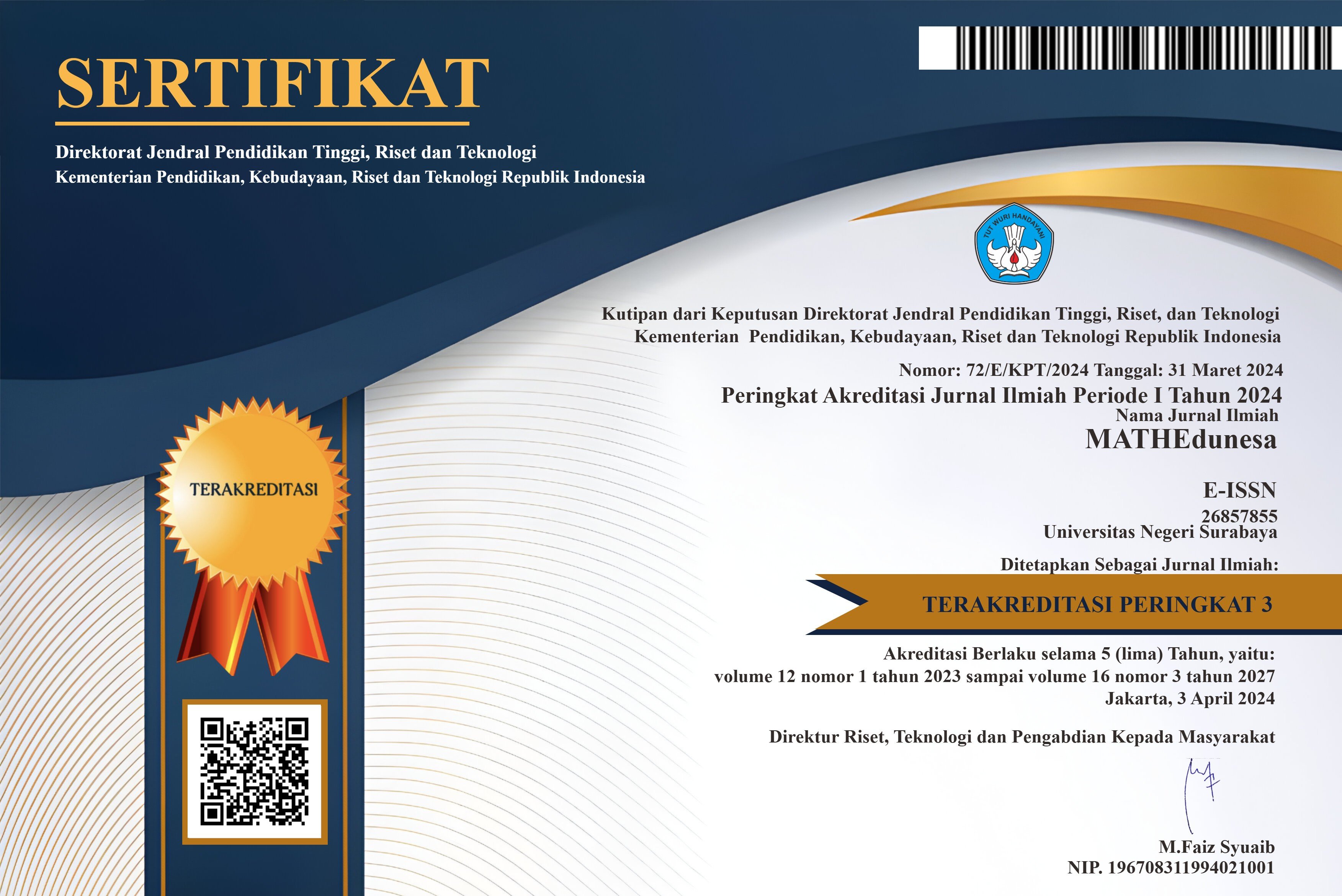PROSES BERPIKIR SISWA SMP DALAM MENYELESAIKAN MASALAH MATEMATIKA MATERI FUNGSI DITINJAU DARI PERBEDAAN JENIS KELAMIN
THINKING PROCESS OF JUNIOR HIGH SCHOOL STUDENTS IN SOLVING MATH PROBLEMS IN THE MATTER OF JUNCTION IN TERMS OF GENDER DIFFERENCES
DOI:
https://doi.org/10.26740/mathedunesa.v9n3.p504-508Downloads
Download data is not yet available.
Downloads
Published
2020-12-18
Issue
Section
Articles
 Abstract views: 205
,
Abstract views: 205
, PDF Downloads: 261
PDF Downloads: 261




